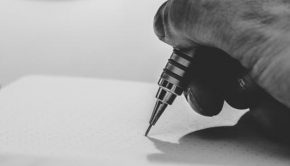Why Designers Are Fundamental To Your Business
These days, branding is big business. For companies it can be make or break when it comes to branding: a misunderstood campaign and your brand can go up in flames, but a spot-on branding strategy and business is booming. Because a brand is the identifying emotion or idea connected to a business by customers, it is the reason customers will utilise your product or service, or whether they won’t. It is the image of your business as a whole so it is an integral part of a business.
Essentially, what makes a brand memorable is identity design and logo. A brand depends on its identity design to represent its beliefs and aspirations to the world. Identity design is fundamentally a visual representation, which means that conceptualising and creating a visual image for your brand in the form of identity design and a logo is hugely important for your company. So too are your designers.
On the surface a brand may seem like a very superficial thing. Indeed, some logos are very simplistic – a tick, a jaguar, an apple. Certainly you would be forgiven for thinking you could slap together a colour scheme, a nice little picture, some pretty fonts for your slogan and you’re sorted. But when you think about it, a brand logo needs to incorporate all the elements that make your business what it is, its values and beliefs – all in one visual.
When designers are tasked with inventing a logo which will represent a company’s brand, they realise this is a big responsibility. They need to do their homework regarding the company and bear in mind the fundamental aspects of the brand to inform their design. Then, they need to consider the five principles of effective logo design: a logo should be simple, memorable, versatile, appropriate and timeless. No pressure.
Once the background to the logo has been established, the conceptualising of the design can take place. This is where a designer’s artistic training will come in handy. While the majority of graphic designers have a background in graphic design, there is a growing number of successful designers who come from a fine art background.
Fine art is understood as a means of self-expression on the part of the artist, but graphic design is a similar form of expression – but of a company rather than the designer. Logos create reactions based on their visuals. They are successful (or not) because of their first impressions. A logo should initiate an emotional response from the viewer, which is what fine art aims to do and what fine artists are good at doing. Of course fine art is open to interpretation in a way that a logo should not be but there are a range of skills utilised by fine artists that can be harnessed in graphic design.
Usually the first step in the design process would be a sketch. Even though computer software and design programmes are used to create the final image, many designers prefer to stick to traditional pen-and-paper or multimedia techniques in the beginning stages. This is when the fundamental concepts of shape and colour come into play. A background in fine art provides designers with a solid understanding of theories of composition and colour as well as practice in different artistic techniques.
Considering the importance of a brand, it’s not surprising that companies take very seriously the task of finding the right designer for their company. Designers are chosen based on their previous work and reputation, but also their educational history. While a portfolio and graphic design experience is a telling indicator of a designer’s talent and aesthetic, experience in a fine art background and lessons at a fine art school will add to their appeal. So while lessons in landscape painting, sculpture or photography may not initially seem as useful additions to a CV, they will illustrate the designer’s artistic diversity.
Branding your business is fundamental to its success so it’s important to recruit the most capable designers to work on it. When choosing a designer, try to find someone who suits your business ethos and understands your ideas, as this is how they will successfully translate that into a visual representation.






















































